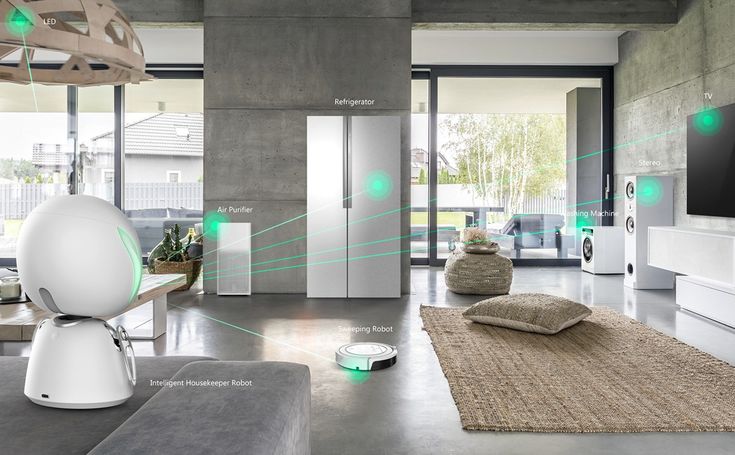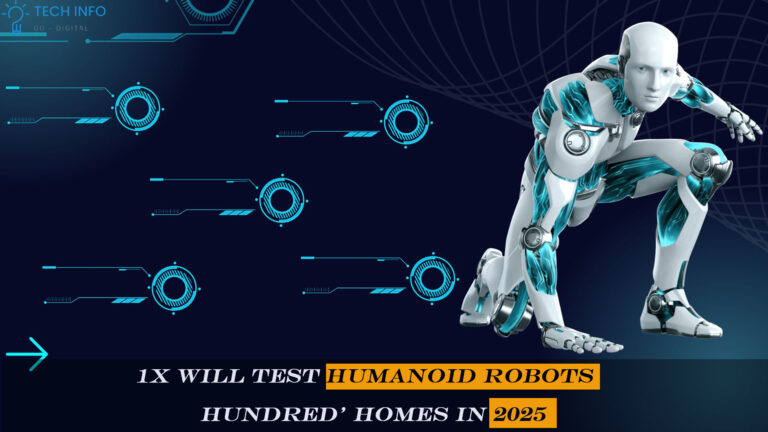Table of Contents
Toggle1X to Test Humanoid Robots in ‘A Few Hundred’ Homes in 2025: A New Era of Domestic Robotics

humanoid robot
The future of robotics is no longer a distant dream—it’s knocking on our doors. In a groundbreaking announcement, 1X, a leading robotics company, has revealed plans to test humanoid robots in “a few hundred” homes by 2025. This initiative marks a significant milestone in the integration of advanced robotics into everyday life, promising to transform how we live, work, and interact with technology. But what does this mean for society, and how will these humanoid robots impact our daily lives? Let’s explore this exciting development in detail.
The Vision of 1X: Bringing Robots into Our Homes

Robots into Our Homes
1X, formerly known as Halodi Robotics, has been at the forefront of developing humanoid robots designed to assist humans in various tasks. Unlike traditional robots that are often confined to industrial or specialized environments, 1X’s robots are built to operate in human-centric spaces, such as homes, offices, and public areas. The company’s mission is to create robots that can seamlessly integrate into our lives, providing assistance, companionship, and support where needed.
The decision to test these robots in real-world home environments is a bold and strategic move. By deploying humanoid robots in “a few hundred” households, 1X aims to gather valuable data on how these machines interact with humans, adapt to different living conditions, and perform everyday tasks. This real-world testing phase is crucial for refining the robots’ capabilities and ensuring they meet the needs of diverse users.
What Can These Humanoid Robots Do?
1X’s humanoid robots are designed to be versatile and adaptable. While specific details about the models being tested in 2025 are still under wraps, the company has hinted at several key functionalities:
- Household Assistance: From cleaning and organizing to cooking and laundry, these robots are expected to handle a wide range of domestic chores. Imagine coming home to a spotless house, with dinner prepared and your laundry neatly folded—all thanks to your humanoid helper.
- Companionship: For individuals living alone or the elderly, these robots could provide much-needed companionship. They can engage in conversations, remind users to take medication, and even offer emotional support through advanced AI algorithms.
- Child and Elderly Care: The robots could assist in caring for children or elderly family members, ensuring their safety and well-being. This could include monitoring their activities, assisting with mobility, and providing entertainment.
- Home Security: Equipped with advanced sensors and cameras, these robots can act as a security system, patrolling your home and alerting you to any unusual activity.
- Customization: One of the most exciting aspects of 1X’s robots is their ability to learn and adapt. Over time, they can tailor their behavior and tasks to suit the specific preferences and routines of their users
The Technology Behind the Robots

Technology Behind the Robots
The success of 1X’s humanoid robots hinges on cutting-edge technology. Here are some of the key components that make these robots possible:
- Artificial Intelligence (AI): At the core of these robots is advanced AI that enables them to understand and respond to human commands, learn from their environment, and make decisions in real-time.
- Natural Language Processing (NLP): The robots are equipped with NLP capabilities, allowing them to engage in meaningful conversations with users. This makes them more intuitive and user-friendly.
- Computer Vision: With sophisticated cameras and sensors, the robots can navigate complex environments, recognize objects, and avoid obstacles. This is essential for performing tasks like cleaning or assisting with mobility.
- Mobility and Dexterity: Humanoid robots require a high degree of mobility and dexterity to perform tasks effectively. 1X’s robots are designed with advanced actuators and joints that mimic human movements, enabling them to handle delicate objects and navigate tight spaces.
- Energy Efficiency: To operate seamlessly in home environments, these robots are built to be energy-efficient, with long-lasting batteries and low power consumption
The Benefits of Humanoid Robots in Homes
The introduction of humanoid robots into households could bring numerous benefits:
- Increased Productivity: By taking over mundane and time-consuming tasks, these robots can free up time for individuals to focus on more meaningful activities, such as spending time with family or pursuing hobbies.
- Enhanced Quality of Life: For the elderly or individuals with disabilities, humanoid robots can provide much-needed assistance, improving their independence and overall quality of life.
- Cost Savings: While the initial investment in a humanoid robot may be significant, the long-term savings in terms of reduced reliance on human caregivers or domestic help could be substantial.
- Safety and Security: With their ability to monitor and respond to emergencies, these robots can enhance home security and provide peace of mind to users.
- Companionship: In an increasingly connected yet isolated world, humanoid robots could offer companionship and emotional support, particularly for those who live alone.
Challenges and Concerns
While the potential benefits are immense, the deployment of humanoid robots in homes also raises several challenges and concerns:
- Privacy Issues: With cameras and sensors constantly monitoring the home, there are valid concerns about data privacy and security. How will 1X ensure that user data is protected?
- Cost and Accessibility: Humanoid robots are likely to be expensive, at least initially. This could limit their accessibility to wealthier households, exacerbating social inequalities.
- Job Displacement: As robots take over domestic tasks, there is a risk of job displacement for human workers in sectors like cleaning and caregiving.
- Ethical Considerations: How do we ensure that these robots are used ethically? For example, what safeguards will be in place to prevent misuse or over-reliance on robots for caregiving?
- Technical Limitations: Despite advancements, humanoid robots are still far from perfect. Issues like limited battery life, susceptibility to malfunctions, and difficulty handling highly complex tasks could hinder their effectiveness.
The Road Ahead
The testing of humanoid robots in “a few hundred” homes in 2025 is just the beginning. If successful, this initiative could pave the way for widespread adoption of humanoid robots in the coming decades. However, achieving this vision will require addressing the challenges outlined above and ensuring that the technology is developed and deployed responsibly.
1X’s efforts are part of a broader trend in the robotics industry, with companies like Tesla, Boston Dynamics, and SoftBank also working on humanoid robots. As competition heats up, we can expect rapid advancements in the field, bringing us closer to a future where robots are an integral part of our daily lives.
The announcement by 1X to test humanoid robots in homes by 2025 is a significant milestone in the evolution of robotics. These robots have the potential to transform our homes, making them more efficient, secure, and comfortable. However, as we embrace this exciting new technology, it is crucial to address the associated challenges and ensure that the benefits are accessible to all.
The future of domestic robotics is no longer a distant dream—it is just around the corner. As we prepare to welcome humanoid robots into our homes, we must also prepare for the profound changes they will bring to our lives and society as a whole. The journey ahead is both thrilling and uncertain, but one thing is clear: the age of humanoid robots is upon us.




